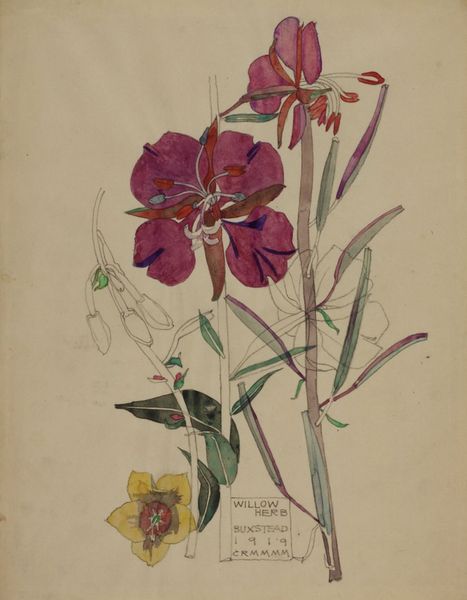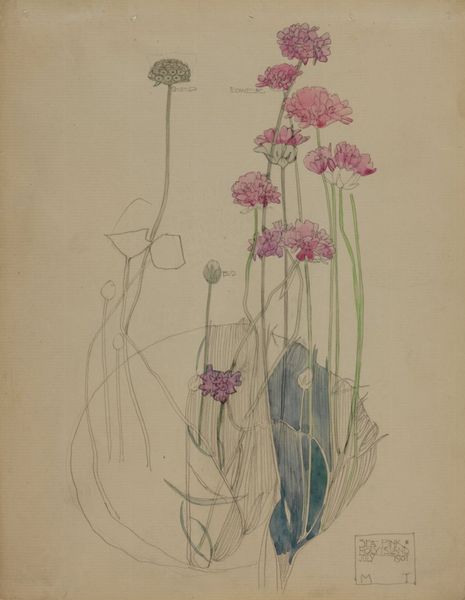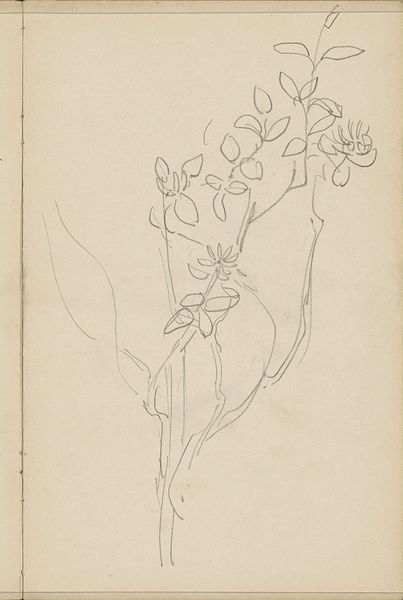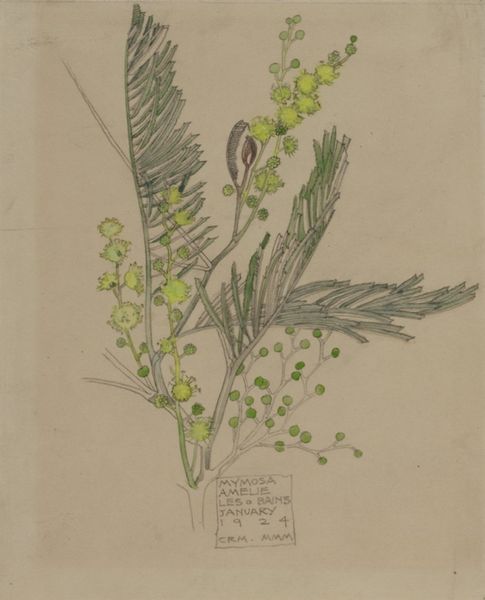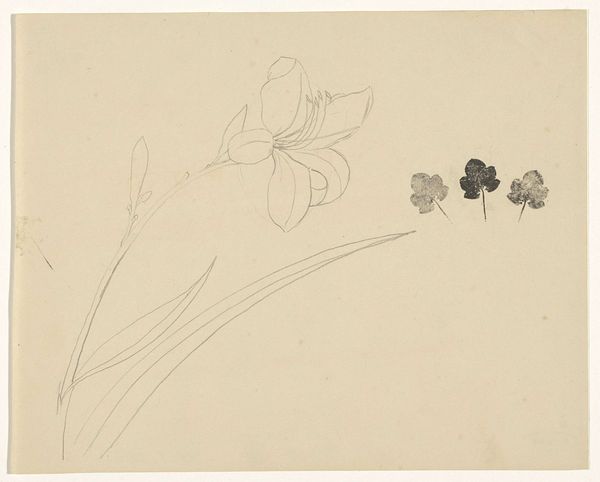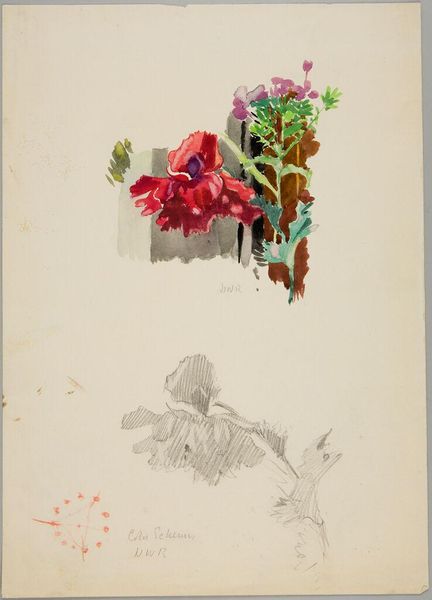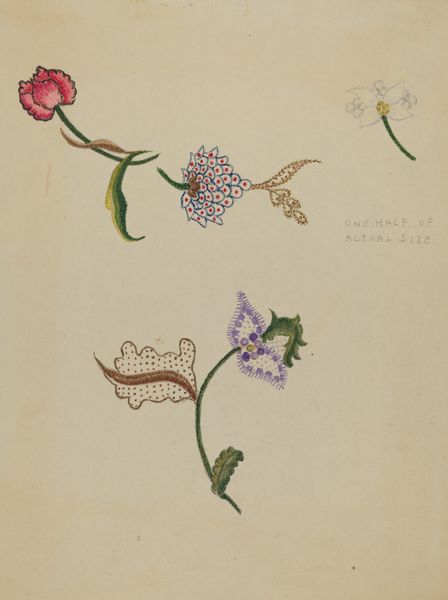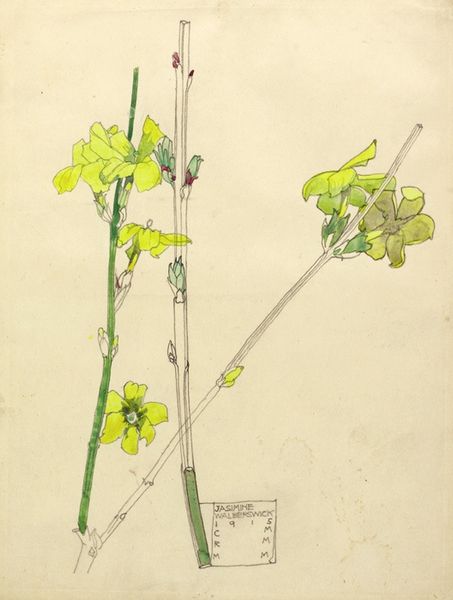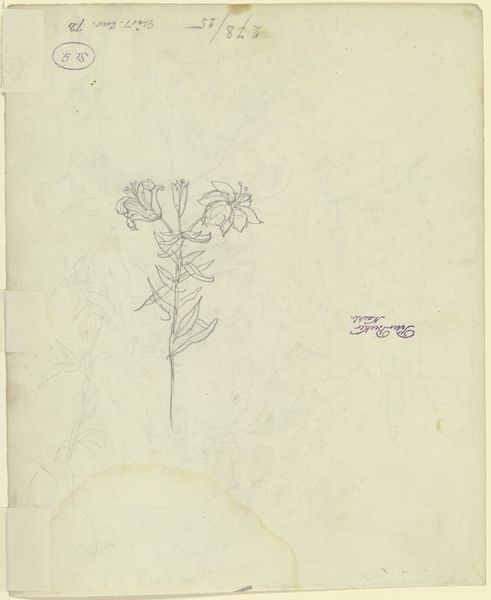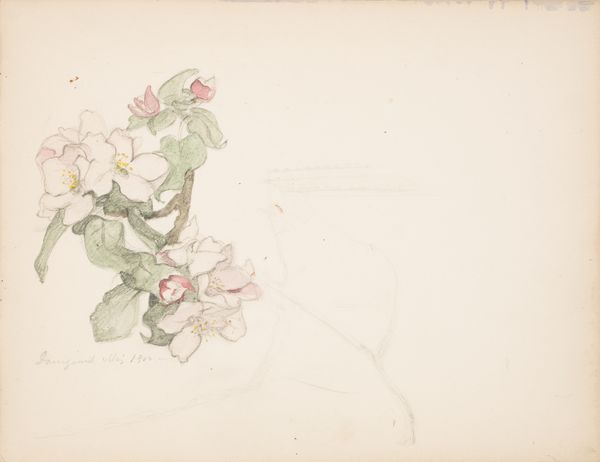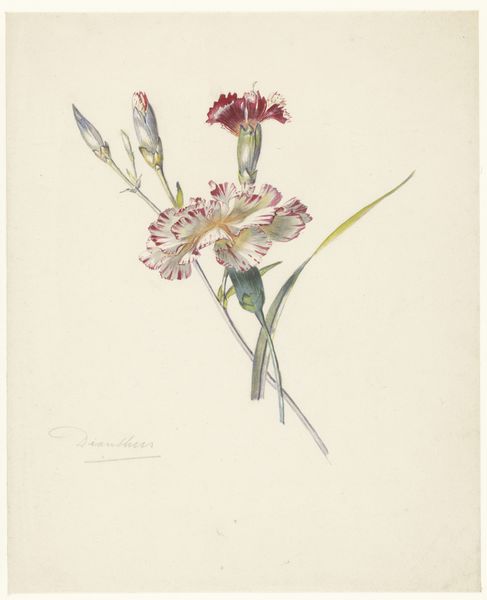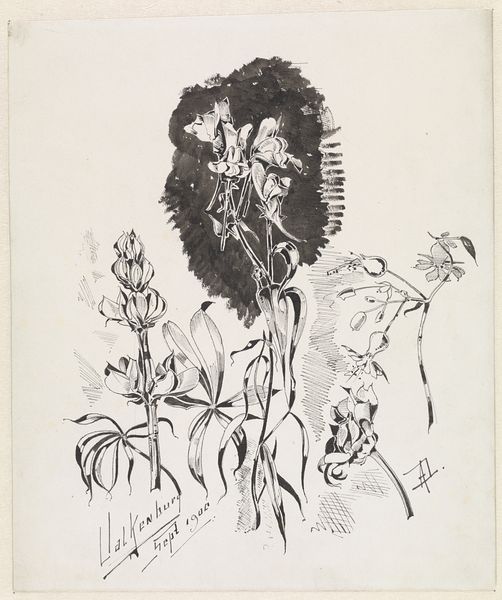
drawing, watercolor, ink
drawing
art-nouveau
glasgow-school
watercolor
ink
watercolor
Copyright: Public domain
Curator: Charles Rennie Mackintosh's "Stork's-bill, Holy Island" created in 1901 is before us. It's executed in watercolor and ink. Editor: Immediately, there’s a sense of delicate transience. The colours are so subtle, and the linework incredibly precise, capturing the fragile nature of plant life. Curator: Indeed, observe how Mackintosh uses line to define form. The inkwork creates structure, which offers an armature for the gentle washes of watercolour, illustrating his interest in organic morphology and perhaps invoking the Glasglow Style aesthetic so visible elsewhere in his oeuvre. Editor: Considering the process—the way the watercolor interacts with the paper, the visible layering of ink—it suggests a careful study. One gets the impression of time spent closely observing nature, the work reflecting a pre-industrialised, slow mode of engaging with the natural world. The artwork becomes an archive. Curator: Quite so. Note how certain sections are left bare or only faintly suggested, creating a visual rhythm that invites the eye to move across the composition. This play of positive and negative space gives the botanical study dynamism and verve beyond the merely representational. Editor: Looking closely at the choice of materials, I wonder about the source of the ink. What would have been available? Thinking about local materials and the production of pigments adds a fascinating layer to how we interpret Mackintosh's aesthetic decisions here. Also, what did Holy Island represent, materially, at this time, what type of paper might Mackintosh be sketching on? Curator: A crucial point. Furthermore, it could be said that the composition invokes a sense of structuralism; the way the plant's anatomy is laid bare, reducing it to its basic elements, presents a fascinating intersection between nature and abstraction. Editor: Ultimately, viewing "Stork's-bill, Holy Island" through this materialist lens enriches my appreciation, emphasizing how a detailed botanical study such as this serves as evidence of craft, technique and a profound connection between maker and environment. Curator: I concur; while dissecting its structural and compositional properties reveals how Mackintosh manipulated elements of visual expression, you have unearthed for us a different understanding through its inherent materiality and cultural production.
Comments
No comments
Be the first to comment and join the conversation on the ultimate creative platform.
